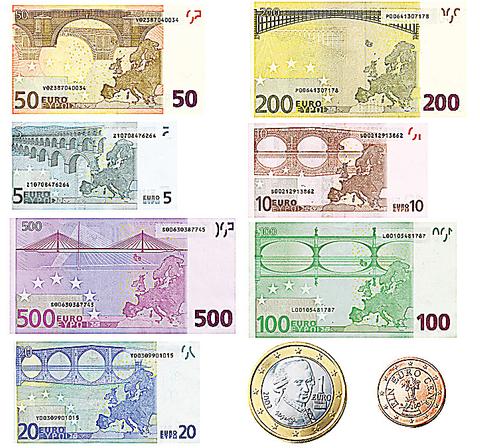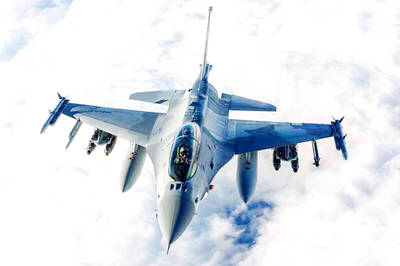The euro has been a feature of the financial landscape since Jan 1, 1999, when the majority of EU members abolished their national currencies in order to adopt a common currency, the euro. The old banknotes and coins could not be replaced overnight, and will still be used until early 2002.
On Jan 1, 2002, however, the euro will become a physical reality across Europe when European consumers and tourists alike will replace their notes and coins with the euro. The Austrian schilling, along with the German mark or Italian lira, and other national currencies will enter history. The greater part of Europe will only have one legal tender left: the euro.
The design of the euro was born in Austria. Back in 1996 Robert Kalina, an engraver at the Austrian Mint, won a public competition to create the banknotes for over 300 million Europeans.

The central motif of the euro is the bridge -- not a real one, such as not to favor any European city or state, but one combined of different famous European bridges.
The bridge symbolizes the link between the different countries of Europe, which have pledged to unite economically and politically, yet maintain their rich cultural diversity.
The euro notes are a crash course in art history, as the International Herald Tribune put it recently in an article, showing seven periods of European architecture: Classical for euro note, Romanesque for the 10, Gothic for the 20, Renaissance for the 50m, Baroque/Rococo for the 100, iron and glass architecture for the 200, and lglassy Modernism for the 500.
The euro coins exemplify this "diversity within unity" in a tangible way: while the front side of the euro coins will be identical throughout the 12 country "Euro"-zone, the reverse side will show country-specific motifs. All coins are valid in all countries, regardless of their reverse motif.
Austria's euro coins feature historic buildings in our capital Vienna (Secession, Stephansdom, Belvedere), famous Austrians like Wolfgang Amadeus Mozart, or Bertha v. Suttner, the Austrian pacifist and Nobel laureate of 1905 known worldwide for her stance against war, as well as typical plants like Austria's national flower, the Edelweiss (remember the "Sound of Music"?) and the small alpine flower Enzian.
Starting next year, ATMs and banks will dispense euro notes.
If you still have Austrian schillings from prior visits, do not worry.
You will be able to exchange them for euro notes at any bank for a limited time, and at the central bank in Vienna for many years to come; other European countries have similar arrangements.
If you still have banknotes from European countries and you do not intend to travel any time soon, you had better exchange them right now here in Taiwan, or during the first months of next year in any European country because later on the national currencies will only be accepted in their home countries.

LONG FLIGHT: The jets would be flown by US pilots, with Taiwanese copilots in the two-seat F-16D variant to help familiarize them with the aircraft, the source said The US is expected to fly 10 Lockheed Martin F-16C/D Block 70/72 jets to Taiwan over the coming months to fulfill a long-awaited order of 66 aircraft, a defense official said yesterday. Word that the first batch of the jets would be delivered soon was welcome news to Taiwan, which has become concerned about delays in the delivery of US arms amid rising military tensions with China. Speaking on condition of anonymity, the official said the initial tranche of the nation’s F-16s are rolling off assembly lines in the US and would be flown under their own power to Taiwan by way

CHIP WAR: The new restrictions are expected to cut off China’s access to Taiwan’s technologies, materials and equipment essential to building AI semiconductors Taiwan has blacklisted Huawei Technologies Co (華為) and Semiconductor Manufacturing International Corp (SMIC, 中芯), dealing another major blow to the two companies spearheading China’s efforts to develop cutting-edge artificial intelligence (AI) chip technologies. The Ministry of Economic Affairs’ International Trade Administration has included Huawei, SMIC and several of their subsidiaries in an update of its so-called strategic high-tech commodities entity list, the latest version on its Web site showed on Saturday. It did not publicly announce the change. Other entities on the list include organizations such as the Taliban and al-Qaeda, as well as companies in China, Iran and elsewhere. Local companies need

CRITICISM: It is generally accepted that the Straits Forum is a CCP ‘united front’ platform, and anyone attending should maintain Taiwan’s dignity, the council said The Mainland Affairs Council (MAC) yesterday said it deeply regrets that former president Ma Ying-jeou (馬英九) echoed the Chinese Communist Party’s (CCP) “one China” principle and “united front” tactics by telling the Straits Forum that Taiwanese yearn for both sides of the Taiwan Strait to move toward “peace” and “integration.” The 17th annual Straits Forum yesterday opened in Xiamen, China, and while the Chinese Nationalist Party’s (KMT) local government heads were absent for the first time in 17 years, Ma attended the forum as “former KMT chairperson” and met with Chinese People’s Political Consultative Conference Chairman Wang Huning (王滬寧). Wang

CROSS-STRAIT: The MAC said it barred the Chinese officials from attending an event, because they failed to provide guarantees that Taiwan would be treated with respect The Mainland Affairs Council (MAC) on Friday night defended its decision to bar Chinese officials and tourism representatives from attending a tourism event in Taipei next month, citing the unsafe conditions for Taiwanese in China. The Taipei International Summer Travel Expo, organized by the Taiwan Tourism Exchange Association, is to run from July 18 to 21. China’s Taiwan Affairs Office spokeswoman Zhu Fenglian (朱鳳蓮) on Friday said that representatives from China’s travel industry were excluded from the expo. The Democratic Progressive Party government is obstructing cross-strait tourism exchange in a vain attempt to ignore the mainstream support for peaceful development